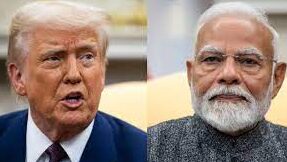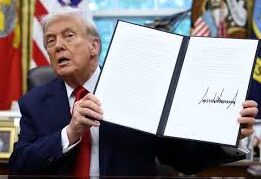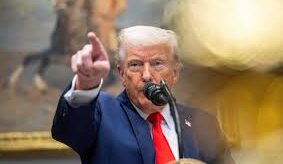Indian Prime Minister Narendra Modi is promising major tax cuts to help households and businesses brace for looming U.S. trade penalties that could hit the world’s fifth-largest economy hard.
The move comes after U.S. President Donald Trump threatened to double import duties on Indian goods, raising tariffs from 25% to 50%. Trump says the hike is punishment for New Delhi’s decision to keep buying oil from Russia, which he argues helps Moscow fund its war in Ukraine.
The threat has rattled Indian exporters, who warn it could trigger a collapse in overseas orders and massive job losses. New Delhi has condemned Washington’s plan as “unfair, unjustified and unreasonable.”
Modi’s “Diwali gift”
In an Independence Day speech last week, Modi vowed to “bring down the tax burden on the common man.” His proposal would slash India’s complex goods and services tax (GST), which currently has four tiers ranging from 5% to 28%, into just two brackets: 5% and 18%.
That means everything from small cars to air conditioners could soon get cheaper. Modi framed the cuts as a “Diwali gift” for families, evoking the Hindu festival of lights, when spending typically soars on gold, clothing, and consumer goods.
Economists estimate the reform could reduce government revenues by $13 to $17 billion annually, but also spark much-needed demand at a time of trade uncertainty.
Analysts at Emkay Global Financial Services said the plan would shift most goods now taxed at the top 28% rate down to 18%, while nearly all items in the 12% bracket would move to 5%. Rival firm Motilal Oswal said the move would deliver “sizeable savings” to households and lift sectors from consumer electronics to autos.
The final decision rests with the GST Council, which includes representatives from India’s states. The group has often struggled to reach consensus on tax changes.
Trade war risks
Trump’s tariffs, if enforced by his August 27 deadline, could deal a blow to India’s already fragile economy. Analysts warn growth could fall below 6% this year if no U.S.-India trade deal is reached, compared with the Reserve Bank of India’s 6.5% forecast.
India has yet to outline a clear long-term shift away from Russian crude. Trade intelligence firm Kpler said refiners are testing supplies from the U.S., West Africa, and Latin America, but Russian oil still makes up a core share of India’s imports.
“Until there’s a clear policy shift or sustained change in trade economics, Russian flows remain a core part of India’s crude basket,” Kpler analyst Sumit Ritolia said.
For Modi, the timing is critical. State elections are expected later this year in Bihar, a politically important state of 130 million people. Cutting taxes now could help soften the blow of tariffs while boosting his appeal to middle-class voters.
“The GST readjustment is a strong response from Modi in that context,” said economist Deepanshu Mohan of OP Jindal Global University. “It’s Modi telling the middle class: ‘We are trying to make sure you have enough at your end.’”
Still, Mohan noted, the shift is also an admission that India’s economy has not been working well for its lower middle-income population for years.
Uncertain talks
U.S.-India trade talks have made little progress, with Indian media reporting that Washington postponed a planned late-August visit by its negotiators.
Both governments say they want a deal, but for now, India is staring down the possibility of steep new tariffs and hoping that tax cuts at home will cushion the blow.






